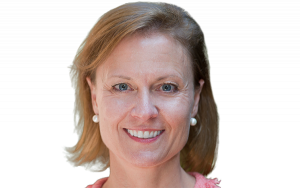More Choices, Less Polarization: How Other Countries Are Making School Work
Berner: Most nations fund a wide variety of schools and hold them all accountable for academic results — an approach called educational pluralism.

Get stories like these delivered straight to your inbox. Sign up for The 74 Newsletter
Education in the United States remains incredibly partisan, and the presidential race offers no relief. Red states want less exposure to race and gender in schools; blue states want more. Red states expand school choice laws; blue states shrink them. Players on all sides pitch education as a zero-sum game. Even research is weaponized to demonstrate the superiority — or inferiority — of different types of schools, whether district, charter or private. Social cohesion across differences? In many quarters, this feels like a bridge too far.
That’s the bad news. The good news is that it doesn’t have to be this way. In fact, for most places in the world, it isn’t. That’s because most countries fund a wide variety of schools and hold them all accountable for academic results. This approach is called educational pluralism, and it animates school systems from Europe to Asia, from Canada to Australia and across southern Africa. The Netherlands funds 36 kinds of schools equally; the government of Indonesia supports secular and religious schools alike; the Australian federal government is the top funder of independent schools in the country because of their ability to close achievement gaps for low-income students. In fact, 171 of the 204 school systems tracked by UNESCO rely on public-private partnerships, the volunteer sector and community organizations to deliver education for all.
In U.S. terms, educational pluralism means school choice and accountability by design. It acknowledges that schools that reflect distinctive norms and values often bring real benefits to students — so these governments fund a variety of school types. It also assumes that education is not merely a private good, but also a common project whose outcomes affect society as a whole; therefore, public concern and oversight of academic content is appropriate.
Educational pluralism is not perfect, but if implemented with care, it can function as an escape valve against constant conflict; while it deliberately honors families’ diverse values, it also builds social cohesion by insisting that everyone share a broad base of knowledge, such as capital cities of the world, 20th century poetry, the history and impact of the American Revolution or the tenets of major religions. This common content would include, as a matter of course, exposure to a variety of viewpoints and beliefs without indoctrinating students as to their merits. For instance, the English government has funded religious schools since 1834 and secular schools since 1870, but all students in all schools learn about diverse religions and philosophies.
Here are three practical steps toward the pluralist ideal that elected officials and candidates alike in the U.S. could get behind.
The first step: Find a cross-partisan message that invites rather than condemns. This means putting down rhetorical weapons and eschewing charged terms such as “educational marketplace” (on the right) or “privatization” (on the left).
Second, focus on initiatives that welcome all schools. High-quality curriculum and instruction is a good place to start. Teachers in every school need access to rigorous materials that challenge students’ minds and enliven their hearts. They also need time to learn what the materials require in the classroom. This is exactly what a state department of education can provide across the board, and many — including Louisiana, Delaware, Rhode Island and Wisconsin — already do, though only for those who work in district schools. Why not teachers in any type of school?
Third, build the infrastructure to support both choice and quality. A great example is Indianapolis’s The Mind Trust, a nonprofit that, since 2006, has recruited teachers into the state, launched four dozen charter schools and partnered with the city’s public school district to design schools that by design meet their communities’ specific needs. They don’t pit schools against each other; rather, they help all schools in Indianapolis grow stronger. Since 2021, the organization has partnered with the Indiana General Assembly and the state Department of Education to accelerate students’ academic recovery, in two ways. Indiana Learns gives eligible students access to math and reading tutoring, and Summer Learning Labs offer a rigorous, five-week, free or low-cost summer academic and enrichment program. The nation needs more of such thoughtful approaches that champion instead of demeaning teachers and set a high bar for academic success.
Policies that fund a variety of schools with distinctive world views, while incentivizing the use of curricula that build robust knowledge across the major subjects, would constitute an unfamiliar “both/and” to an American audience. This approach asks a lot of teachers, parents and young people. But if Belgium, South Africa and many Canadian provinces can lean into productive pluralism, so can the United States.
Get stories like these delivered straight to your inbox. Sign up for The 74 Newsletter

;)
